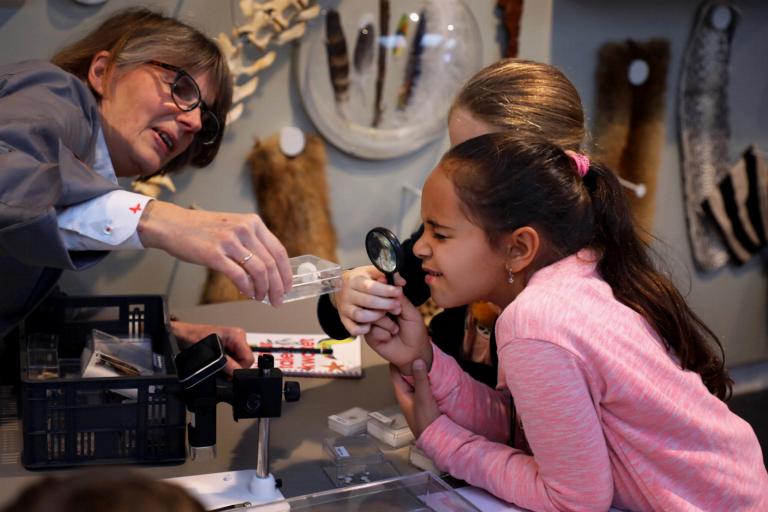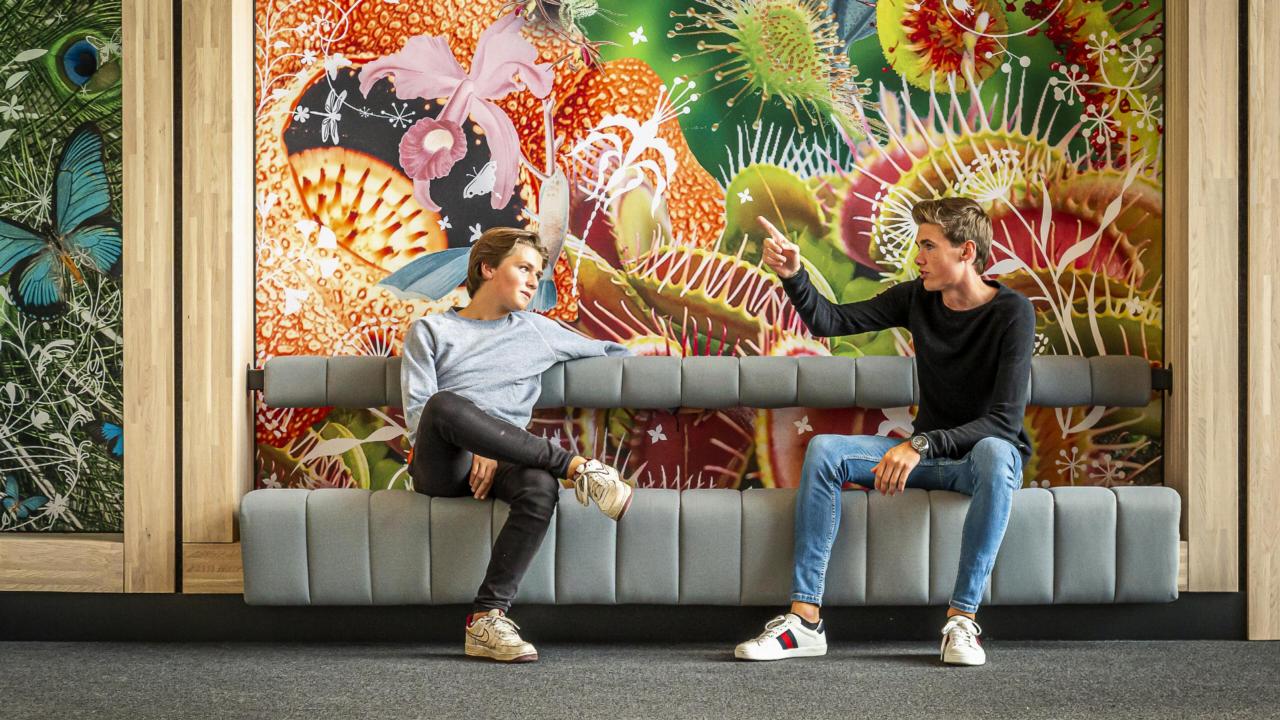
Have you ever felt an elephant's thick hide, the serrated nose of a swordfish or the soft mane of a lion? Touching is allowed! You'll discover forms in nature and the purposes they serve. What are the different talents of plants and animals? Gather a complete set of four. By using a digital microscope, you can discover the talents of the smallest living things.
Everything you need to knowin a row
- Type: workshop
- Level: groups 5 and 6 (8–10 years old)
- Length: 120 minutes
- Number of pupils: at least 15, but no more than 36
- Areas: Workshop Present, gallery Life
- The school supplies: one parent/supervisor for every 10 pupils
- Naturalis supplies: one educational assistant
- Main objective: pupils observe, investigate and compare animals and plants and understand that certain forms serve particular functions
- Link to core objective: pupils are taught about the structure of plants, animals and humans and about the form and function of their constituent parts
- Keywords: patterns, form-function, environment
Course of the programat the museum
The schedule given below is an indication only.
0-45 minutes: research in the workshop area
Pupils start in the workshop area under the guidance of our educational assistant with a brief introduction. What are talents and what talents do animals and plants have? We will explore this by playing a nature talent quartet. Pupils look in groups at real animals and many parts of animals. Will they succeed in finding as many talents as possible? Or four animals with the same talent? Quartet! Parents/guardians from school are asked to support the students.
45 - 75 minutes: make a quartet and visit gallery Life
Each pupil gets their own quartet booklet to further complete. Which animals are real hiders, cold-tolerant or super fast? With stickers and drawings, pupils make several of their own quartets in the workshop room and in the gallery Life. In this gallery there are about a thousand animals on display that are found in the world today.
75 - 110 minutes: researching the small things in nature
In addition to large and striking animals, there are also many small animals in the world. Using microscopes, pupils examine small seeds, insects and shells, among other things. Look closely! What talents do these very small animals and plants have?
110 - 120 minutes: wrap up
The educational assistant concludes the workshop by discussing an animal with unexpected talent. There are also a variety of games to do with quartet, such as who am I. Does the educational assistant guess which animal he/she is? Play it by yourself at home or at school!
Booking infoprepare your visit
Everything you need to know about practical matters such as parking, lockers and house rules.
